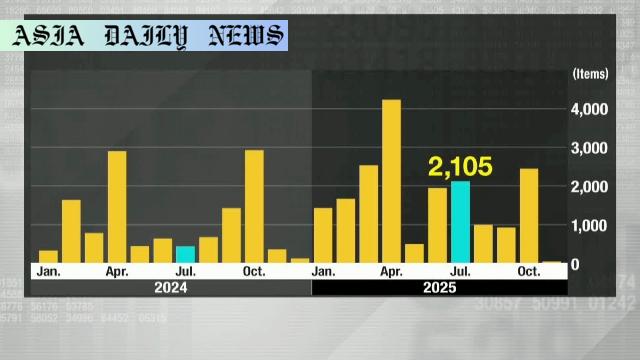Price Hike: A survey reveals 2,105 Japanese food products to witness price increases in July, driven by surging costs.
Price Hike: Over 2,000 Japanese food items to increase prices in July.
Survey identifies seasonings and beverages as most affected categories.
Economic factors like material costs and weather blamed for instability.

Introduction: A Surge in Food Prices Across Japan
Japanese shoppers are bracing themselves for a challenging month as over 2,000 food and beverage items are poised for price hikes starting this July. According to a survey conducted by Teikoku Databank, a leading private research firm, 195 domestic companies have confirmed price increases on approximately 2,105 products. These hikes mark a dramatic fivefold increase compared to July of the previous year, indicating a significant economic shift in the country.
Seasonings and Essential Commodities Face the Biggest Impact
Seasonings top the list of affected items, contributing to the largest category of products facing price increases. This group, which includes spices and broth products, will see changes in the pricing of over 1,445 items. Alcoholic beverages and processed foods are next, with 206 new items becoming more expensive, alongside confections such as gum and chocolate. The adjustments stem from rising costs of raw materials and higher production expenses, which have placed immense pressure on manufacturers.
Underlying Causes of the Price Hike
Industry experts attribute this trend to two major factors: surging material prices and increasing production costs. Recent global instability in supply chains, compounded by abnormal weather patterns, has forced companies to pass these costs onto consumers. Teikoku Databank estimates that these challenges will persist, with price increases expected for more than 18,500 items by November, equaling nearly a 50% rise compared to 2024. The combination of domestic and international economic fluctuations has heightened the financial strain on households and businesses alike.
Broader Economic Implications
This price increase trend highlights broader economic and societal challenges. With food and beverage prices as essential components of household expenses, many Japanese consumers may struggle to manage their budgets. Restaurants and food service providers are also likely to adjust their pricing structures to accommodate increased costs, potentially triggering a ripple effect across other sectors of the economy. Additionally, rising costs in Japan mirror similar trends in global markets, underscoring the interconnectedness of modern economies in navigating inflationary pressures.
Future Outlook: Navigating Economic Challenges
As inflation continues to impact daily living, experts suggest that consumers adopt practical strategies to mitigate its effects. From seeking alternative budget-friendly options to planning meals around seasonal and locally available ingredients, there are ways to minimize expenses. Meanwhile, businesses must balance profitability with customer needs and ensure transparent communication about price adjustments. Policymakers must also address supply instability to stabilize costs and safeguard economic resilience. As the situation evolves, all stakeholders must work collectively to navigate these challenges effectively.



Commentary
Understanding the Implications of Price Increases
The announcement of price hikes on over 2,000 Japanese food items in July is undeniably concerning, especially for households already struggling under inflationary pressures. It highlights the stark reality many consumers face globally, where the cost of basic necessities is rising faster than incomes. This economic trend forces us to reconsider spending habits and financial priorities, calling for more mindful budgeting and cost-saving strategies to cope with the shifting market conditions.
The Ripple Effect Across Industries
The impact of these price increases is not confined to individual consumers, as it inevitably extends to businesses across multiple industries. Restaurants and small food vendors, for instance, will likely feel the pressure to pass on these rising costs to their customers, thereby potentially reducing foot traffic or profits. Large-scale manufacturers will also need to reevaluate their production and distribution costs, which could influence their long-term competitiveness. This upward spiral in pricing underscores the importance of sustainable practices within the food and beverage industry to curb inflationary risks in the future.
A Call for Resilience and Innovation
Despite the challenges, this situation also presents an opportunity for resilience through innovation. For instance, adopting advanced technologies to optimize production lines, experimenting with alternative or sustainable materials, and diversifying supply chains could create more cost-effective and stable systems. Simultaneously, consumers can benefit from heightened awareness and advocacy for local products, which may be less susceptible to external price shocks. By fostering collaboration among government, businesses, and individuals, Japan can develop strategies to minimize the long-term impacts of these price hikes, ensuring a stable and sustainable future.